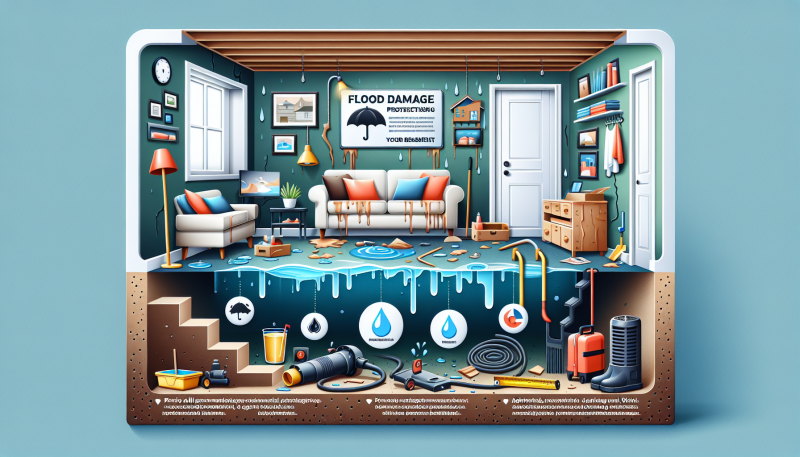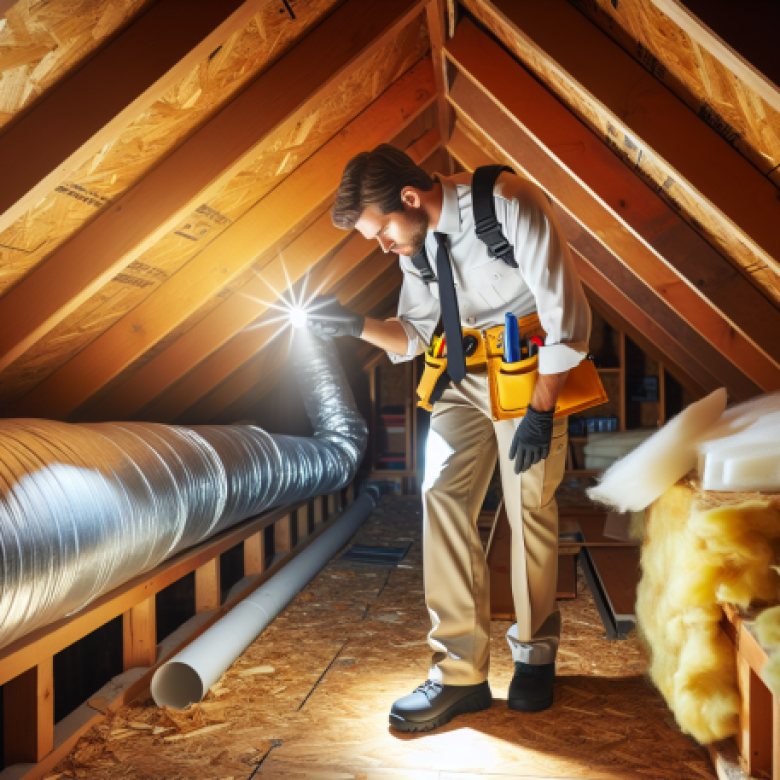Flooding can wreak havoc on your home, especially when it comes to your basement. Protecting your basement from flood damage is crucial to maintaining the integrity of your property and ensuring the safety of your family. At Projekt Property Restoration, we specialize in commercial and residential property restoration, offering expert services to help you safeguard your home against water damage. With over 16 years of experience, our fully licensed and insured team is dedicated to providing top-notch service to our clients. Located at 20533 Biscayne Blvd Suite #1231, Aventura, FL 33180, we are available 24/7 to address your emergency needs. Contact us at 1-855-933-7935 or via email at Claims@ProjektFL.com for prompt and professional assistance. Our comprehensive services include water damage restoration, mold assessment and remediation, fire damage restoration, and more. Trust Projekt Property Restoration to protect your basement and restore your peace of mind.
Understanding the Risks: Common Causes of Basement Flooding
Flood Damage: Protecting Your Basement
Basement flooding is a common yet devastating issue that many homeowners face. Understanding the risks and common causes of basement flooding is crucial for effective prevention and protection. This comprehensive guide will delve into the various factors that contribute to basement flooding and provide actionable insights to safeguard your home.
Common Causes of Basement Flooding
Basement flooding can occur due to a variety of reasons. Recognizing these causes can help you take preventive measures to protect your home from water damage.
1. Heavy Rainfall
Heavy rainfall is one of the most common causes of basement flooding. When the ground becomes saturated with water, it can no longer absorb additional rainfall, leading to water seeping into basements. According to the National Weather Service, "flash floods can occur within minutes or hours of excessive rainfall." This rapid influx of water can overwhelm drainage systems and lead to basement flooding.
2. Poor Drainage Systems
Inadequate drainage systems can exacerbate the risk of basement flooding. If your home’s gutters and downspouts are clogged or improperly installed, water can accumulate around the foundation. This can lead to water seeping into the basement through cracks and other openings. Ensuring that your drainage systems are well-maintained and functioning correctly is essential for preventing basement flooding.
3. Foundation Cracks
Cracks in the foundation are a significant entry point for water. Over time, the natural settling of a house can cause small cracks to form in the foundation. These cracks can widen and allow water to seep into the basement, especially during heavy rainfall or snowmelt. Regularly inspecting your foundation for cracks and sealing them promptly can help mitigate this risk.
4. Sump Pump Failure
A sump pump is a critical component in preventing basement flooding. It helps to remove excess water from the basement and direct it away from the foundation. However, if the sump pump fails due to power outages, mechanical issues, or lack of maintenance, it can lead to basement flooding. According to the American Society of Home Inspectors, "more than 60% of American homes suffer from below-ground wetness." Ensuring that your sump pump is in good working condition and has a backup power source can prevent this issue.
5. Sewer Backup
Sewer backups can occur when the municipal sewer system becomes overwhelmed during heavy rainfall or due to blockages. This can cause sewage to back up into your home’s plumbing system and flood the basement. Installing a backwater valve can help prevent sewer backups and protect your basement from flooding.
6. Improper Grading
The grading or slope of the ground around your home plays a crucial role in directing water away from the foundation. If the ground slopes towards your home, water can accumulate around the foundation and seep into the basement. Ensuring that the ground is properly graded to direct water away from your home can help prevent basement flooding.
7. Burst Pipes
Burst pipes are another common cause of basement flooding. Pipes can burst due to freezing temperatures, corrosion, or excessive pressure. Regularly inspecting your plumbing system and insulating pipes in cold weather can help prevent burst pipes and subsequent basement flooding.
Preventive Measures
Understanding the common causes of basement flooding is the first step in protecting your home. Here are some preventive measures you can take to safeguard your basement:
- Regular Maintenance: Regularly inspect and maintain your home’s drainage systems, foundation, and plumbing to prevent potential issues.
- Install a Sump Pump: Ensure that your sump pump is in good working condition and consider installing a backup power source.
- Seal Cracks: Promptly seal any cracks in the foundation to prevent water from seeping into the basement.
- Proper Grading: Ensure that the ground around your home is properly graded to direct water away from the foundation.
- Install a Backwater Valve: Consider installing a backwater valve to prevent sewer backups.
Conclusion
Basement flooding can cause significant damage to your home and belongings. By understanding the common causes of basement flooding and taking preventive measures, you can protect your home and minimize the risk of water damage. For more information on how to protect your basement from flooding, visit Projekt Restoration.
References and Examples
- National Weather Service. “Flash Flooding.” Retrieved from [NWS](https://www.weather.gov/safety/flood-flash).
- American Society of Home Inspectors. “Basement Water Problems.” Retrieved from [ASHI](https://www.homeinspector.org/Resources/Homeowner-Resources/Basement-Water-Problems).
For professional assistance with water damage restoration, visit our contact page. If you are dealing with mold issues, our mold assessment services can help identify and address the problem. Additionally, our dehumidification services can help maintain optimal humidity levels in your basement to prevent mold growth and water damage.
Effective Prevention Strategies: Keeping Your Basement Dry
Flood Damage: Protecting Your Basement
Flood damage can be a homeowner’s worst nightmare, especially when it affects the basement. Basements are particularly vulnerable to flooding due to their below-ground location, making them susceptible to water infiltration from heavy rains, rising groundwater, and plumbing leaks. However, with the right prevention strategies, you can keep your basement dry and protect your home from costly water damage. This comprehensive guide will explore effective prevention strategies to safeguard your basement from flooding.
Understanding the Risks
Before diving into prevention strategies, it’s essential to understand the risks that make basements prone to flooding. These include:
- Heavy Rainfall: Intense and prolonged rainfall can overwhelm drainage systems, leading to water seepage into basements.
- Groundwater: Rising groundwater levels can infiltrate basements through cracks in the foundation.
- Plumbing Leaks: Burst pipes or faulty plumbing can cause significant water damage.
- Poor Drainage: Inadequate drainage around the home can lead to water pooling near the foundation.
- Sump Pump Failure: A malfunctioning sump pump can fail to remove water, resulting in basement flooding.
Effective Prevention Strategies
1. Proper Grading and Landscaping
One of the most effective ways to prevent basement flooding is to ensure proper grading and landscaping around your home. The ground should slope away from the foundation to direct water away from the basement. Here are some tips:
- Grade the Soil: Ensure that the soil around your home slopes away from the foundation at a gradient of at least 6 inches over 10 feet.
- Install Swales: Swales are shallow ditches that can help redirect water away from your home.
- Use Native Plants: Native plants with deep root systems can help absorb excess water and stabilize the soil.
2. Maintain Gutters and Downspouts
Gutters and downspouts play a crucial role in directing rainwater away from your home. Regular maintenance can prevent clogs and ensure proper water flow:
- Clean Gutters: Remove leaves, debris, and other blockages from gutters at least twice a year.
- Extend Downspouts: Ensure that downspouts extend at least 6 feet away from the foundation to prevent water from pooling near the basement.
- Install Gutter Guards: Gutter guards can help prevent debris from entering and clogging the gutters.
3. Waterproof Your Basement
Waterproofing your basement is a critical step in preventing water infiltration. There are several methods to achieve this:
- Seal Cracks and Gaps: Inspect your basement walls and floor for cracks and gaps. Use a high-quality sealant to fill these openings and prevent water from seeping in.
- Apply Waterproof Coatings: Apply waterproof coatings or paints to the interior walls and floor of your basement to create a moisture barrier.
- Install a Vapor Barrier: A vapor barrier can help prevent moisture from entering your basement through the walls and floor.
4. Install a Sump Pump
A sump pump is a vital tool for keeping your basement dry. It collects and pumps out water that accumulates in a sump basin, preventing flooding:
- Choose the Right Pump: Select a sump pump with sufficient capacity to handle the water volume in your area.
- Regular Maintenance: Test your sump pump regularly to ensure it is functioning correctly. Clean the sump basin and check for any blockages.
- Battery Backup: Consider installing a battery backup system to ensure your sump pump works during power outages.
5. Improve Drainage Systems
Effective drainage systems are essential for preventing water from entering your basement. Here are some strategies:
- French Drains: Install French drains around the perimeter of your home to collect and redirect water away from the foundation.
- Interior Drainage Systems: Interior drainage systems can help manage water that enters the basement by directing it to a sump pump.
- Check for Clogs: Regularly inspect and clean your drainage systems to prevent clogs and ensure proper water flow.
6. Install Window Well Covers
Basement windows can be a source of water infiltration, especially during heavy rains. Installing window well covers can help:
- Prevent Water Entry: Window well covers prevent water from pooling in window wells and seeping into the basement.
- Keep Debris Out: Covers also keep leaves, dirt, and other debris out of window wells, reducing the risk of clogs.
7. Regular Inspections and Maintenance
Regular inspections and maintenance are crucial for identifying potential issues before they become major problems:
- Inspect the Foundation: Regularly inspect your foundation for cracks, gaps, and signs of water damage. Address any issues promptly.
- Check Plumbing: Inspect your plumbing system for leaks, corrosion, and other issues that could lead to water damage.
- Test Sump Pump: Test your sump pump regularly to ensure it is functioning correctly.
8. Emergency Preparedness
Despite your best efforts, emergencies can still happen. Being prepared can minimize damage and ensure a swift response:
- Emergency Kit: Keep an emergency kit with essential items such as a flashlight, batteries, a first-aid kit, and important documents.
- Know the Shut-Off Valves: Familiarize yourself with the location of your home’s water shut-off valves and know how to turn them off in case of a plumbing emergency.
- Contact Professionals: Have the contact information of professional restoration services, such as Projekt Restoration, readily available for immediate assistance.
9. Utilize Technology
Modern technology offers several tools to help monitor and prevent basement flooding:
- Water Alarms: Install water alarms in your basement to alert you to the presence of water.
- Smart Sump Pumps: Smart sump pumps can send alerts to your phone if they detect water or if there is a malfunction.
- Remote Monitoring: Remote monitoring systems allow you to keep an eye on your basement’s conditions even when you’re not at home.
Conclusion
Protecting your basement from flood damage requires a combination of proactive measures and regular maintenance. By implementing the strategies outlined in this guide, you can significantly reduce the risk of water infiltration and keep your basement dry. Remember, prevention is always better than dealing with the aftermath of a flood. For more information on how to protect your home and for professional assistance, consider reaching out to Projekt Restoration.
By taking these steps, you can ensure that your basement remains a safe and dry space, free from the devastating effects of flood damage.
In conclusion, safeguarding your basement from flood damage is not just about protecting a part of your home; it’s about ensuring the safety and well-being of your entire household. By taking proactive measures such as installing sump pumps, sealing cracks, maintaining proper drainage systems, and staying informed about weather conditions, you can significantly reduce the risk of flooding and its associated costs. Remember, a little preparation today can save you from substantial headaches and expenses tomorrow. Stay vigilant, stay prepared, and keep your basement—and your home—safe from the ravages of floodwaters.





